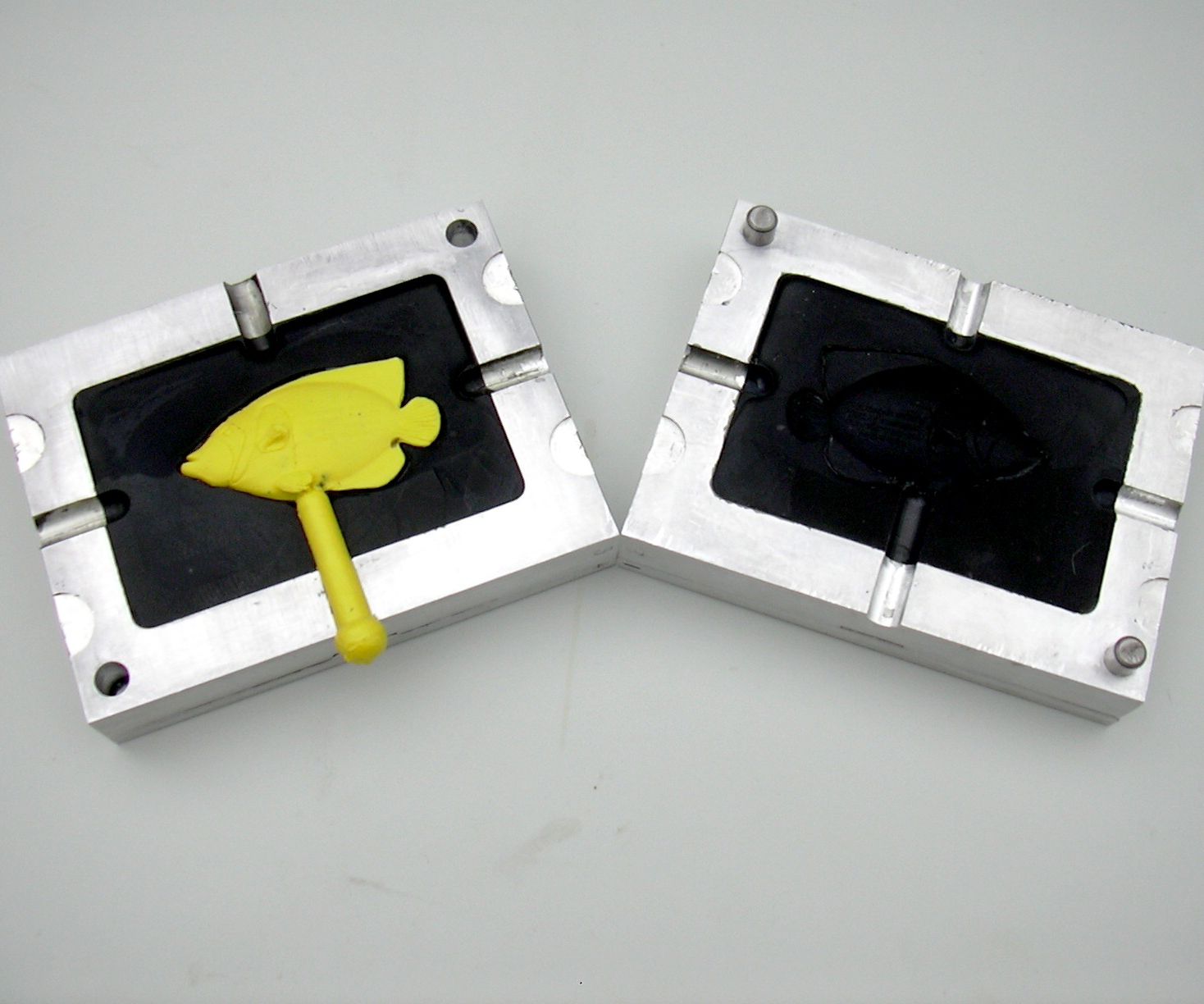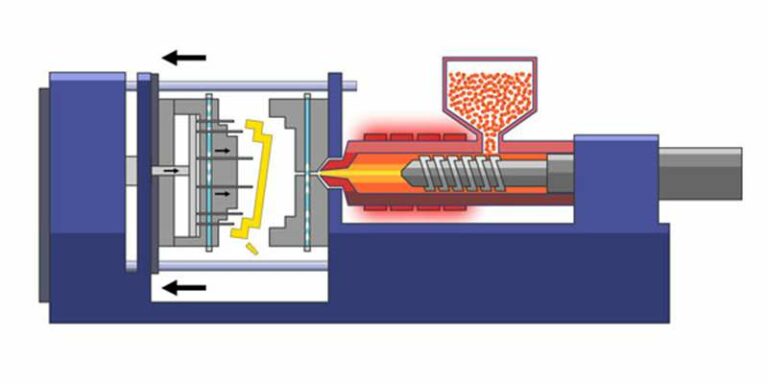The Effect of Plastic Injection Molding on Minimizing Production Costs and Waste
Comprehending the Essentials of Plastic Injection Molding Processes
Plastic injection molding serves as a keystone of modern manufacturing, supplying a systematic approach to creating complicated parts with accuracy. This procedure not just encompasses the fundamental steps of melting and injecting materials into molds however likewise involves a nuanced understanding of different affecting variables, such as temperature level and pressure. As sectors significantly demand performance and top quality, the complexities of this method come to be more crucial. Checking out these vital aspects might expose exactly how even small adjustments can lead to substantial enhancements in manufacturing results, questioning about the potential for development in this established process.
What Is Plastic Injection Molding?
Plastic shot molding is a widely made use of manufacturing process that changes thermosetting and polycarbonate materials right into accurate and complicated shapes. This technique is favored for its ability to create high volumes of the same get rid of phenomenal precision, making it an essential method in different industries, consisting of automotive, customer goods, and clinical devices.
The process entails thawing the picked plastic material and infusing it into a mold and mildew under high pressure. The mold, designed to the requirements of the desired part, permits the liquified plastic to take shape as it solidifies and cools. When the material has hardened, the mold and mildew is opened, and the ended up part is ejected.
Plastic injection molding offers several advantages, consisting of lowered waste, consistency in manufacturing, and the capacity to incorporate detailed styles that may be challenging with various other manufacturing methods. Furthermore, it supports a broad variety of materials, each supplying one-of-a-kind residential or commercial properties that can be customized for particular applications. As industries remain to introduce, plastic injection molding continues to be at the leading edge, allowing the growth of innovative items that satisfy advancing customer needs.
The Shot Molding Refine
The injection molding procedure is an advanced method that entails numerous crucial phases to generate premium plastic components. Plastic pellets are fed into a warmed barrel where they are melted into a thick liquid. This molten plastic is then injected under high pressure into a precision-engineered mold and mildew, which shapes the product right into the desired form.
Once the mold and mildew is filled, the plastic is enabled to strengthen and cool, taking the form of the mold tooth cavity. Air conditioning time is crucial, as it affects the cycle time and the final residential or commercial properties of the molded part. After enough cooling, the mold and mildew opens up, and the ended up part is expelled using ejector pins.
Products Utilized in Shot Molding
Different products can be used in the injection molding process, each offering distinct residential properties that accommodate details applications. One of the most frequently utilized materials include thermoplastics, thermosetting plastics, and elastomers.

Thermosetting plastics, like epoxy and phenolic resins, go through a chemical adjustment during the treating procedure, causing a rigid, stringent framework. These products are optimal for applications calling for high warm resistance and structural honesty, typically made use of in auto parts and electrical insulators.
Elastomers, consisting of silicone and rubber-based products, give flexibility and durability. Their special properties make them appropriate for applications that require flexibility, such as gaskets and seals.
In addition, specialty materials like bio-based plastics and composites are acquiring grip for their ecological advantages and boosted efficiency characteristics, broadening the range of injection molding applications in different markets. Recognizing the properties of these materials is crucial for selecting the suitable type for particular jobs.
Advantages of Injection Molding
Injection molding sticks out as a highly reliable manufacturing process that provides many benefits for producing complicated parts with precision. Among the most significant advantages is the capability to develop intricate designs that would be tough or impossible to attain with various other methods (Plastic Injection Molding). The procedure permits limited resistances and in-depth attributes, ensuring high-quality parts
In addition, injection molding is understood for its rapid production capacities, making it a suitable option for high-volume manufacturing. As soon as the mold and mildew is developed, components can be produced rapidly, lowering lead times and raising overall productivity. This effectiveness not just reduces manufacturing expenses yet also supplies a competitive side in the marketplace.
The convenience of products made use of in injection molding even more improves great site its allure. A vast array of thermoplastics and thermosetting polymers can be used, allowing manufacturers to choose products that finest fulfill their certain needs, consisting of flexibility, heat, and strength resistance.
Furthermore, the process decreases waste, as excess material can frequently be recycled and recycled. This sustainability element adds to a decreased environmental influence, making shot molding an accountable production choice. Overall, the benefits of shot molding make it a recommended method for several industries.
Variables Affecting Item Top Quality
While countless elements can affect product top quality in injection molding, recognizing these components is important for achieving optimum results. Secret elements consist of product selection, processing criteria, and mold and mildew design.
Material selection plays an important function, as various polymers exhibit distinct homes try these out that influence flowability, toughness, and thermal security. Poor material choice can result in issues such as bending or incomplete dental filling.
Processing parameters, including stress, cycle, and temperature time, need to be carefully regulated. Variations in these setups can lead to incongruities partially measurements and surface area coating. For example, excessively heats might trigger degradation of the polymer, while poor stress can lead to brief shots.
Mold design is just as vital, as it figures out the circulation of the molten plastic and the cooling procedure. Poorly developed mold and mildews might cause irregular cooling rates, resulting in dimensional inaccuracies and residual stress and anxieties.

Final Thought
Finally, plastic shot molding works as an essential production process that makes it possible for the efficient manufacturing of top notch parts. Proficiency of the shot molding procedure, consisting of the understanding of materials and the impact of different aspects on product top quality, is essential for accomplishing ideal outcomes. The benefits of this method, such as cost-effectiveness and design versatility, more emphasize its value across several industries, strengthening its condition as a recommended option for high-volume production.
Plastic injection molding serves as a cornerstone of modern production, supplying a methodical approach to producing intricate components with precision.Plastic shot molding supplies several benefits, consisting of reduced waste, uniformity in production, and the capacity to integrate elaborate designs that might be challenging with other producing methods (Plastic Injection Molding). As sectors proceed to introduce, plastic shot molding remains at the forefront, enabling the growth of sophisticated items that satisfy developing consumer needs
The shot molding process is an advanced strategy that involves several essential phases to create high-grade plastic elements.In conclusion, plastic shot molding serves as a critical manufacturing process that enables the effective production of high-quality elements.